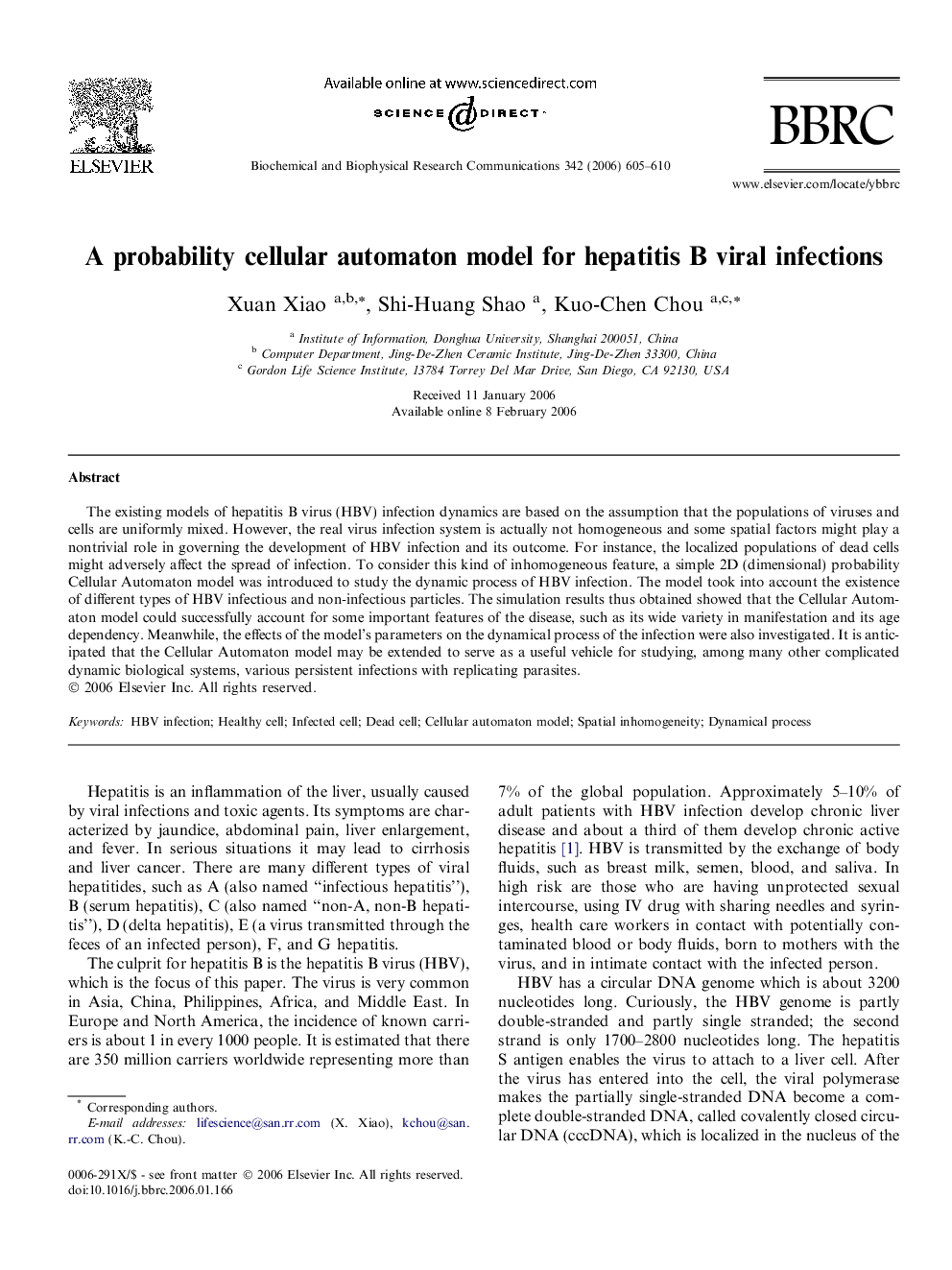| Article ID | Journal | Published Year | Pages | File Type |
|---|---|---|---|---|
| 1939979 | Biochemical and Biophysical Research Communications | 2006 | 6 Pages |
The existing models of hepatitis B virus (HBV) infection dynamics are based on the assumption that the populations of viruses and cells are uniformly mixed. However, the real virus infection system is actually not homogeneous and some spatial factors might play a nontrivial role in governing the development of HBV infection and its outcome. For instance, the localized populations of dead cells might adversely affect the spread of infection. To consider this kind of inhomogeneous feature, a simple 2D (dimensional) probability Cellular Automaton model was introduced to study the dynamic process of HBV infection. The model took into account the existence of different types of HBV infectious and non-infectious particles. The simulation results thus obtained showed that the Cellular Automaton model could successfully account for some important features of the disease, such as its wide variety in manifestation and its age dependency. Meanwhile, the effects of the model’s parameters on the dynamical process of the infection were also investigated. It is anticipated that the Cellular Automaton model may be extended to serve as a useful vehicle for studying, among many other complicated dynamic biological systems, various persistent infections with replicating parasites.
